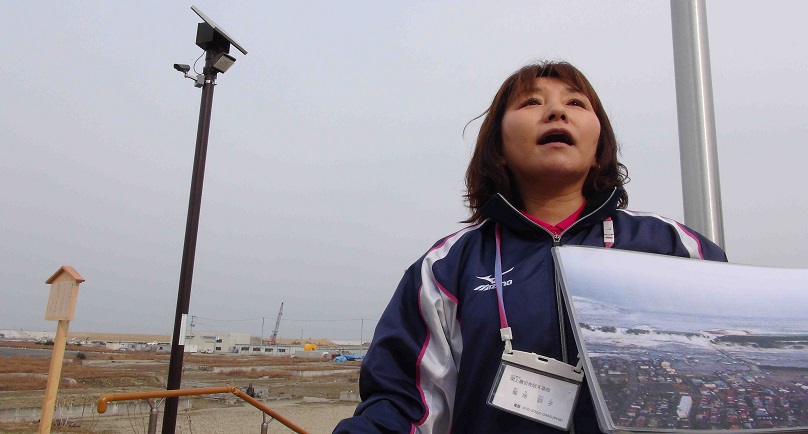by Scott Waide – EM TV
*Editors Note: EM TV Lae Bureau Chief, Scott Waide, represented EM TV at the second Global News Forum held jointly with the Asia-Pacific Broadcasting Union in Sendai, Japan – the scene of one of the worst natural disaster of the 21st century.
A group made up of senior journalists, news editors and heads of media organizations stand in front of a marble memorial in a primary school at the edge of Sendai City, in the Miyagi Prefecture in Japan.
Carved into the stone memorial are the words that echo the grief of the loss suffered by the people here when an 8 metre high tsunami destroyed this place, killing over 500 men women and children.
It is a chilly 8 degrees Celsius and a steady breeze blows in from the shores of this once bustling residential area. Members of the group unused to the cold stand shivering, yet are gripped by the very personal stories being told by the Japanese guide, Noriko and her translator from Japan’s national broadcaster, NHK.
“The tsunami sirens did not sound as they should have,” says Noriko. “The earlier earthquake damaged their mechanism so there was no warning.
“My son has never talked about that day. Only after three years has he spoken about his experiences.”
Noriko’s son, Yuya, was 14 at the time of the 2011 Tohoku earthquake and tsunami and he still bears the emotional and psychological scars of that day. His friend died when the tsunami hit.
In a society that values service and sacrifice, many of the children who lived and died remained true to those values.
Fours years after the tsunami, Yuya told of how his friend had opted to stay back at home to care for his elderly, wheelchair bound aunt instead of going to the shops with his friend. Had he done, he would have lived and his aunt would have died alone.
On March 11, 2011, a magnitude 9 earthquake, shook North East Japan. The quake unleashed the massive tsunami that swept nearly everything in its path.
We were then taken to a 6 metre high manmade hill built in the 1920s by fishermen to keep a look out on the weather. Our guilds show the scars on a pine tree. The tsunami buried this hill two metres under when it came.
Everywhere, there are memorials. Memorials not just for the present but for those who will come in the future.
The resilience of the Japanese is nothing short of amazing. Even with the immense grief and loss that shattered this once thriving fishing village, the people are slowly rebuilding their lives.
The part of Sendai hit by the tsunami was home to a large elderly population, as is the case in many Japanese cities. Resettlement has been harder for them. Noriko explains that for that reason, whole communities have had to be resettled together on temporary sites so that the elderly maintain the close knit relationships that existed before the tsunami.
The Japanese Government has funded the reconstruction of tsunami stricken site. An additional four metres of earth is being put on the vast landscape. Only by 2020 will the land will finally be ready for resettlement.
“Human beings want things to go back to normal. So when the earthquake ended, we picked up our things and tried to continue doing what we were doing. That is when the water came.”
Today, Noriko and her people do what they have done for generations in this disaster prone nation – they pick up the pieces, learn the lessons and live again.


